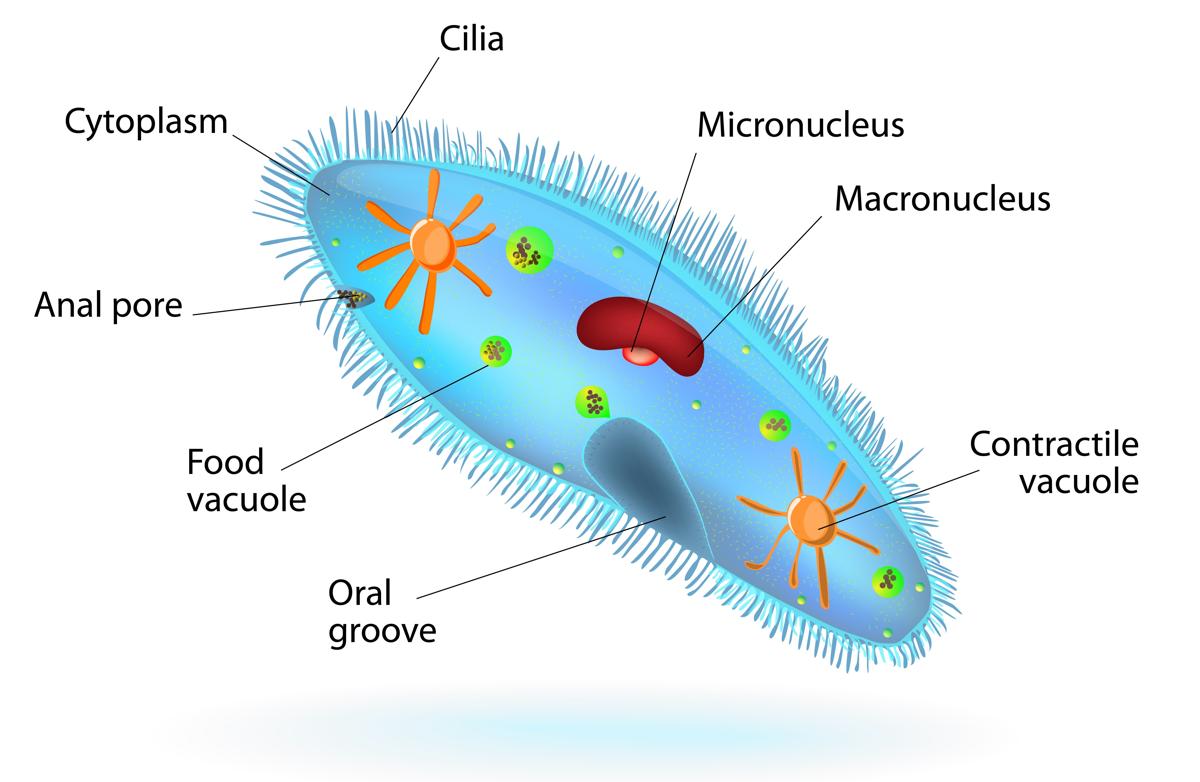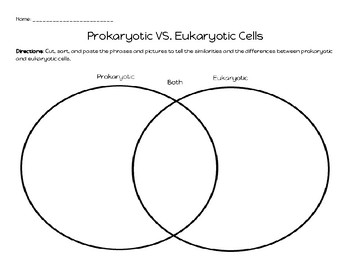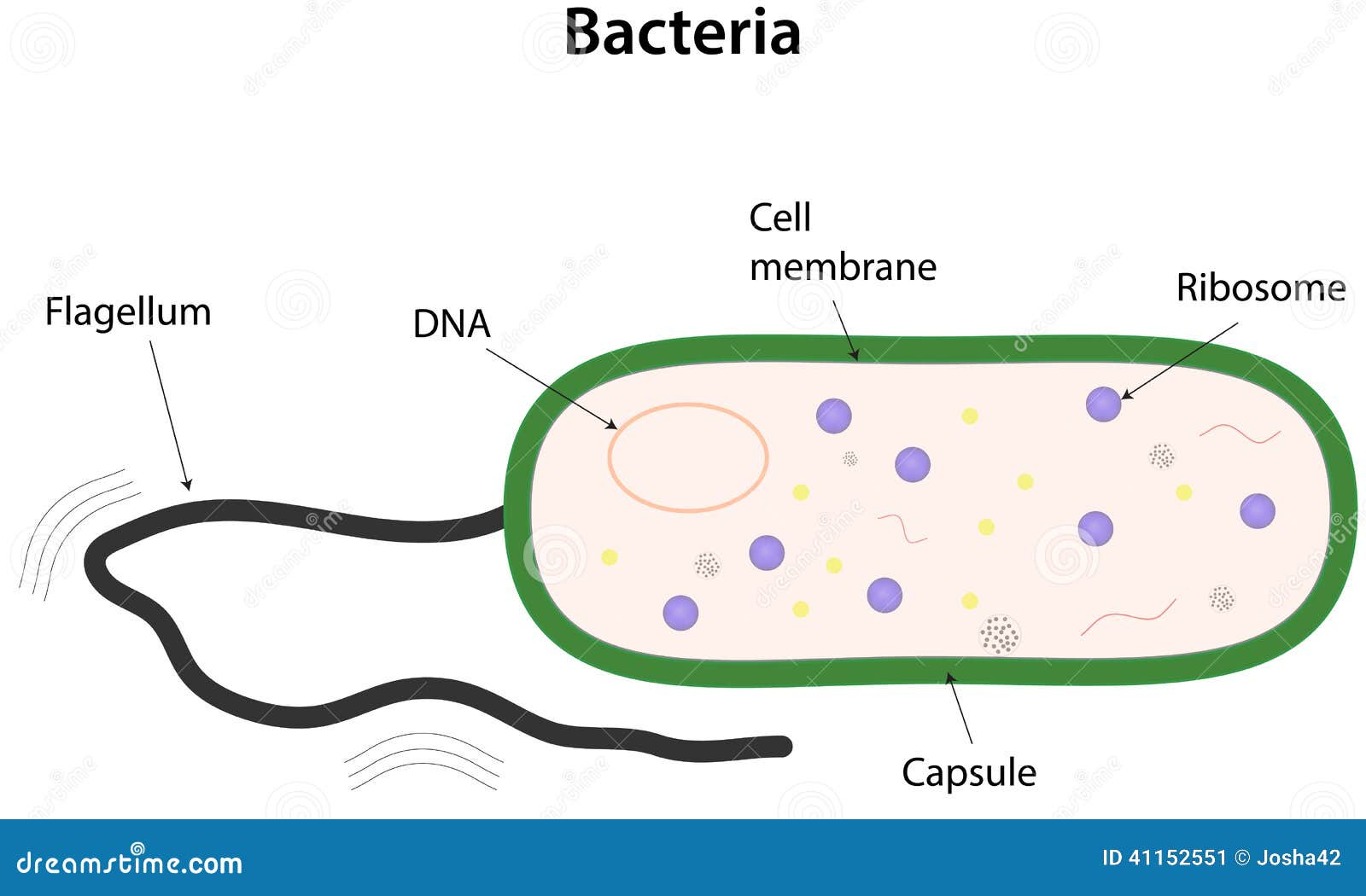44 prokaryotic cells label
Prokaryotic Cell Parts, Functions & Diagram - Science Prof Online Prokaryotic cells are much simpler than the more evolutionarily advanced eukaryotic cell . Whereas eukaryotic cells have many different functional compartments, divided by membranes, prokaryotes only have one membrane (the plasma membrane) enclosing all of the cell's internal contents. Prokaryotic Cell - Definition, Examples & Structure | Biology Dictionary A prokaryotic cell is a type of cell that does not have a true nucleus or membrane-bound organelles. Organisms within the domains Bacteria and Archaea are based on the prokaryotic cell, while all other forms of life are eukaryotic. However, organisms with prokaryotic cells are very abundant and make up much of Earth's biomass. Overview
Prokaryotic Cells - ProProfs Quiz 1. Which structure is found in all prokaryotic cells? A. Flagella B. Ribosomes C. Mitochondria D. Vacuoles 2. Which characteristic applies to all prokaryotic cells? A. They have nucleus B. They have mitochondria C. They have chlorophyll D. They have ribosomes 3. Which of these cell features is absent in bacterial cells? A. Plasma membrane B. DNA C.
Prokaryotic cells label
PDF Prokaryotic Cell Structure & Function Prokaryotes-Arrangements of Cells • Bacteria sometimes occur in groups, rather than singly. • bacilli divide along a single axis, seen in pairs or chains. • cocci divide on one or more planes, producing cells in: - pairs (diplococci) - chains (streptococci) - packets (sarcinae) - clusters (staphylococci). • Size, shape and arrangement ... Eukaryotic Cell - The Definitive Guide | Biology Dictionary The difference between a eukaryotic cell and a prokaryotic cell is simple: eukaryotic cells have membrane-bound organelles. Within a prokaryotic cell (such as a bacteria) the DNA simply floats around the cytoplasm. While prokaryotic cells do have one type of organelle (ribosomes), these organelles are not covered in a plasma membrane. Prokaryotic cell to label - Labelled diagram - Wordwall Prokaryotic cell to label - Labelled diagram. nucleoid region, pili, ribosomes, flagellum, plasmid, cytoplasm, plasma membrane, cell wall, capsule.
Prokaryotic cells label. Label the Prokaryotic cell Quiz - PurposeGames.com About this Quiz. This is an online quiz called Label the Prokaryotic cell. There is a printable worksheet available for download here so you can take the quiz with pen and paper. Total. 0. Get started! Rank. 0. 10. Prokaryotic Cells: Structure, Function, and Definition Prokaryotic cells are not as complex as eukaryotic cells. They have no true nucleus as the DNA is not contained within a membrane or separated from the rest of the cell, but is coiled up in a region of the cytoplasm called the nucleoid. Prokaryotic organisms have varying cell shapes. The most common bacteria shapes are spherical, rod-shaped, and spiral. IB Biology Notes - 2.2 Prokaryotic cells Prokaryotic cells 2.2.1 Draw and label a diagram of the ultrastructure of Escherichia coli (E. coli) as an example of a prokaryote. 2.2.2 Annotate the diagram from 2.2.1 with the functions of each named structure. Cell wall: Protects the cell from the outside environment and maintains the shape of the cell. Prokaryotic Cells | Boundless Biology | | Course Hero Prokaryotic DNA is found in a central part of the cell called the nucleoid. The cell wall of a prokaryote acts as an extra layer of protection, helps maintain cell shape, and prevents dehydration. Prokaryotic cell size ranges from 0.1 to 5.0 μm in diameter. The small size of prokaryotes allows quick entry and diffusion of ions and molecules to ...
Label a prokaryote - Liveworksheets Label a prokaryote prokaryote label ID: 2505341 Language: English School subject: Biology ... Prokaryotic Cells- Definition, Structure, Characteristics, and ... - BYJUS A prokaryotic cell does not have a nuclear membrane. However, the genetic material is present in a region in the cytoplasm known as the nucleoid. They may be spherical, rod-shaped, or spiral. A prokaryotic cell structure is as follows: Capsule- It is an outer protective covering found in the bacterial cells, in addition to the cell wall. It helps in moisture retention, protects the cell when engulfed, and helps in the attachment of cells to nutrients and surfaces. Prokaryotic Cell and Eukaryotic Cell - Microbiology Note Prokaryotic Cells are unicellular and are the earliest and most primitive forms of life on earth. They lack the true nucleus, the DNA is coiled up in a region of the cytoplasm which is called the nucleoid. There are present different shapes of prokaryotic cells such as spherical, rod-shaped, and spiral. They lack membrane-bounded organelles. Prokaryote - Wikipedia Prokaryotic cells have various shapes; the four basic shapes of bacteria are: Cocci - A bacterium that is spherical or ovoid is called a coccus (Plural, cocci). e.g. Streptococcus, Staphylococcus. Bacilli - A bacterium with cylindrical shape called rod or a bacillus (Plural, bacilli).
draw a prokaryotic cell and label it - mercadodeartesaniastijuana Prokaryotic cells 221 Draw and label a diagram of the ultrastructure of Escherichia coli E. Draw and label a diagram of a prokaryotic cell. Make a wet mount of the cyanobacteria species in the lab as instructed and observe under high-dry. Coli as an example of a prokaryote. Draw a diagram of a prokaryotic cell and label at least four parts in it. prokaryotic cell diagram worksheet Prokaryotic Cells Diagram Labeled - Diagram Media diagramedia.blogspot.com. prokaryotic labeled brainly. Cells And Their Organelles Worksheet Answer Key | Cell Organelles . cell worksheet plant cells structure key answer functions organelles parts animal alive function worksheets dna answers name biology printable organelle. Structure of Prokaryotes | Boundless Biology | | Course Hero Prokaryotes are unicellular organisms that lack organelles or other internal membrane-bound structures. Therefore, they do not have a nucleus, but, instead, generally have a single chromosome: a piece of circular, double-stranded DNA located in an area of the cell called the nucleoid. Most prokaryotes have a cell wall outside the plasma membrane. Label-Free Raman Microspectroscopy for Identifying Prokaryotic ... This method also proved successful for identification of Bacillus subtilis cells infected with the double-stranded DNA (dsDNA) phage phi29, displaying a decrease in respective ratio, but failed for archaeal virocells (Methanosarcina mazei with the dsDNA methanosarcina spherical virus) due to autofluorescence. Multivariate and univariate analyses suggest that Raman spectral data of infected cells can also be used to explore the complex biology behind viral infections of bacteria.
Differences Between Prokaryotic Cell and Eukaryotic Cell @ BYJU'S A prokaryotic cell is a primitive type of cell that is characterized by the absence of a nucleus. Furthermore, prokaryotes do not possess membrane-bound cellular organelles. Prokaryotes are exclusively unicellular. What is a Eukaryotic cell? Eukaryotic cells are cells that possess a true nucleus along with membrane-bound organelles.
Identification of individual prokaryotic cells by using enzyme-labeled ... A method to microscopically detect and identify individual cells of members of the domains Bacteria and Archaea is presented. rRNA-targeted oligonucleotides were 5' end labeled with the enzyme horseradish peroxidase and used for whole-cell hybridization. Specifically bound probe was visualized by th …
Draw a diagram of a prokaryotic cell and label at least four parts in it. Click here👆to get an answer to your question ️ Draw a diagram of a prokaryotic cell and label at least four parts in it. Solve Study Textbooks Guides. Join / Login >> Class 11 >> Biology >> Cell : The Unit of Life >> Prokaryotic Cells >> Draw a diagram of a prokaryotic cell and. Question .
PDF Prokaryotic and Eukaryotic Venn Diagram Worksheet Prokaryotic Cells Eukaryotic Cells Prokaryotic and Eukaryotic Worksheet. KEY Directions: Write in the similarities and differences between prokaryotic and eukaryotic cells. • Has DNA • Has a nucleoid (condensed circular DNA) • Can have a cell wall • Unicellular ...
Prokaryotic Cell: Definition, Functions, Diagram, Examples Prokaryotic cells are single-celled organisms that lacks a true nucleus and other membrane-bound organelles. What is a Prokaryotic Cell? Prokaryotic cells are microorganisms that are known to be the earliest on earth. Kingdom Monera includes the prokaryotic cells. A teaspoon full of rich soil may contain billions of them.
Label the prokaryotic cell Quiz - PurposeGames.com This is an online quiz called Label the prokaryotic cell There is a printable worksheet available for download here so you can take the quiz with pen and paper. Your Skills & Rank Total Points 0 Get started! Today's Rank -- 0 Today 's Points One of us! Game Points 8 You need to get 100% to score the 8 points available Actions Add to Playlist
Prokaryotic Cell Labeling Diagram | Quizlet A non-membrane-bounded region in a prokaryotic cell where the DNA is concentrated. cytoplasm A jellylike fluid inside the cell in which the organelles are suspended capsule Covers the cell wall in prokaryotes. cytoplasmic membrane a semipermeable barrier that separates the cell interior (cytoplasm) from the environment cell wall
Prokaryotic cells (article) | Cells | Khan Academy Cell size. Typical prokaryotic cells range from 0.1 to 5.0 micrometers (μm) in diameter and are significantly smaller than eukaryotic cells, which usually have diameters ranging from 10 to 100 μm. The figure below shows the sizes of prokaryotic, bacterial, and eukaryotic, plant and animal, cells as well as other molecules and organisms on a ...
Prokaryotes - Prokaryotic and eukaryotic cells - Eduqas - BBC Prokaryotes Bacteria are amongst the simplest of organisms - they are made of single cells. Their cell structure is simpler than the cells of eukaryotes and cells are smaller, most are 0.2 μm - 2.0...







Post a Comment for "44 prokaryotic cells label"